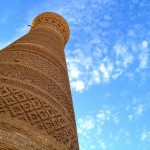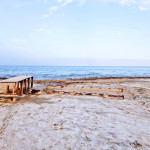Rupert Parker takes to the old roads as he hikes through the heart of Shizuoka
We’re all familiar with high speed travel in Japan, just think of those sleek bullet trains hurtling through the countryside. But another way of getting to know the country is on foot, taking the ancient highways, that once were the only way of getting around. Here is my guide to hikes through the heart of Shizuoka.
Less than one hour from Tokyo by bullet train, Shizuoka prefecture is home to the iconic Mount Fuji. It boasts a spectacular natural environment of coastline, mountains and lakes including the beautiful Izu Peninsula, which has been described as “Japan’s Riviera” and was designated as a Global Geopark by UNESCO in 2018.

The region is steeped in history, has a huge choice of traditional Ryokan inns and Onsen hot springs, and is also a gourmet paradise. Its natural environment produces some of the country’s best food and drink, from green tea and wasabi to fresh seafood.
For over 500 years the Tokaido highway linked Edo (Tokyo) with the former capitals of Kyoto and Osaka and most journeys were made on foot. Much of it has been replaced by modern roads but one 32km section, the Hakone Hachiri, between Odawara and Mishima, has been preserved. We take the bullet train to Odowara and then a local bus to Motohakone, our starting point halfway up Mount Hakone.
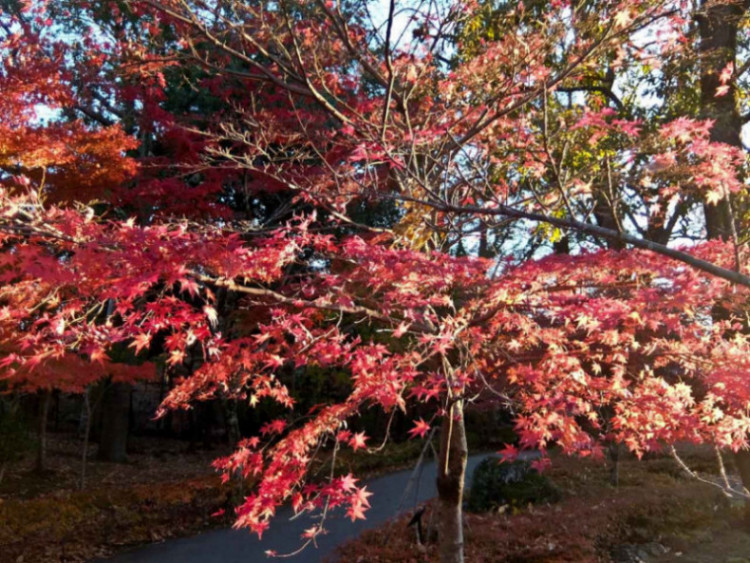

The trail is paved with large round flat stones, and climbs up into the forest through fiery red and yellow autumn colours. The first stop is at the Amasake-chaya Tea House, where the same family has been serving travellers for over 400 years. The traditional wooden interior is unchanged and you take off your shoes and sit crossed legged on the tatami mats. The menu has also stayed the same with Amasake, (sweet non-alcoholic sake) served with Chikara-mochi, (rice cakes).
We continue upwards to the Hakone crater rim, though avenues of tall cedars, and look down onto Lake Ashi, a crater lake 6 km long, formed over 3000 years ago. Replica wooden pirate ships, reminiscent of Japan’s feudal era, ferry passengers across the tranquil waters, with Mount Fuji reflected in the waters. Many people come here to bathe in the numerous Onsen (hot springs) but we press on climbing up to the crater rim on the other side.

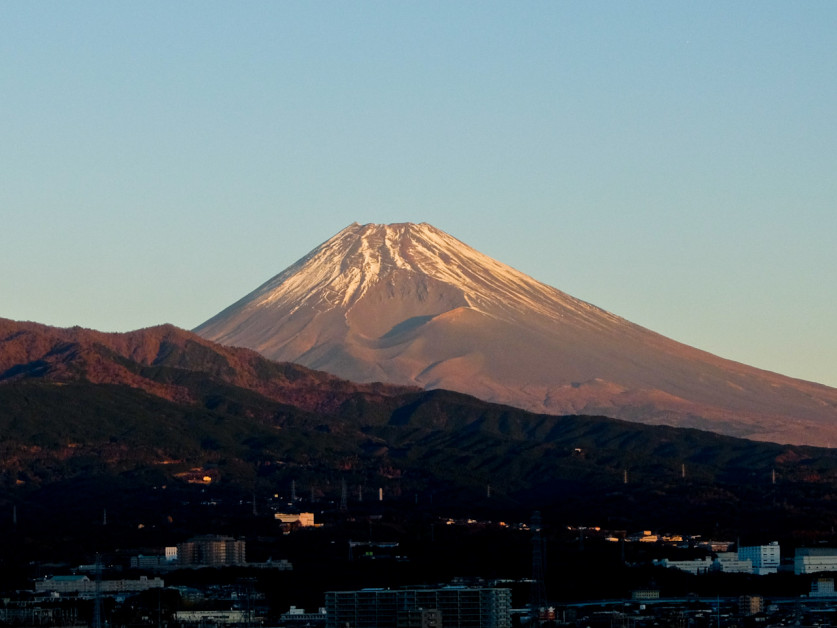
The Hakone pass at 846m marks our highest point and we drop down to the ruins of Yamanaka Castle, constructed in the 16th century. It was meant to protect Odawara, but was destroyed 30 years after it was built by western samurai. Now only the earthworks and foundation stones remain, but it’s an atmospheric place. From here we take the bus to Mishima City and I soak in the rooftop bath watching the sunset over Mount Fuji.
Next day we’re going to walk the Shimoda Kaido, the connecting route from the Tokaido highway to the southern port of Shimoda. We take the bus from Mishima to Joren Falls to start our hike in the Izu Peninsula. The part of the path is know as the Odoriko Trail, as it was the setting for Yasunari Kawabata’s short novel The Izu Dancer. This has been filmed countless times, always on various locations along the trail.
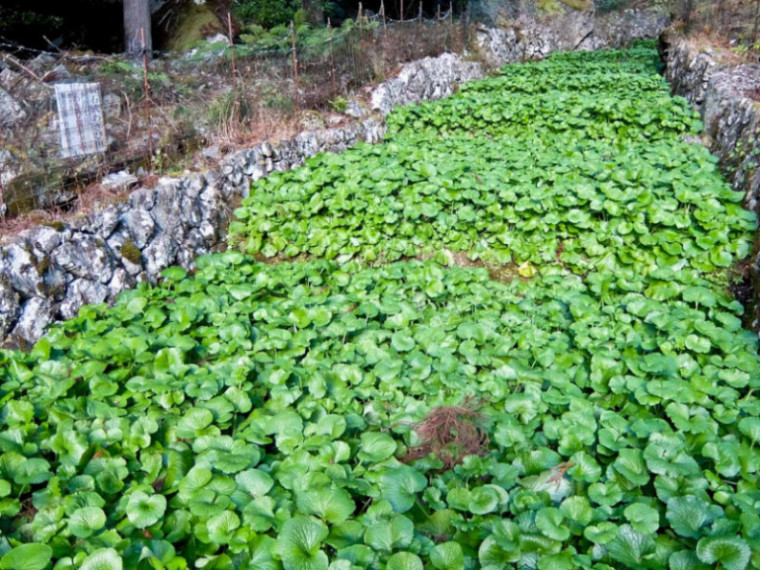
We climb upwards on a good path by a fast flowing stream whose banks are lined with wasabi plantations. A short cut through the mountain is the Amagi Tunnel, a hidden passage 140m long. This atmospheric tunnel has one of the most iconic scenes in the movie with the dancer silhouetted in the exit. From here it’s downhill through avenues of Cedars to the Kawazu River. Here we meet one of the tourist hot spots in the region, the famous Seven Waterfalls.
Kamadaru, with a fall of 22m, is the first waterfall we come to. We continue down the trail, across short suspension bridges and wooden stairs and all waterfalls are sign-posted so impossible to miss. The Shokeidaru Falls has a special companion, a bronze statue of the Izu Dancer with her student admirer.

They’re all impressive and they seem to get better the farther you go. At the bottom is the 30m Odaru and there’s a hot spring resort at its foot. The reward for the adventure is ice cream with fresh grated wasabi – guaranteed to take your breath away, or at least make you sneeze. From here we take a bus to Yumigahama, on the coast, where we overnight.
Morning dawns misty and we take the train north to Izugeni on the scenic east coast of Izu Peninsula, It’s a short easy descent to the sea at Yawatano fishing port before continuing along the coast. The cliff face is lined with volcanic tubular columns and the trail leads over these ancient lava flows. We cross a deep fissure on the Hashidate Suspension Bridge and continue past isolated coves with waves breaking on the black rocks
After a series of ups and downs we arrive at the Renchakuji Temple, founded over a thousand years ago and sitting amidst lush greenery. It’s a repository of cultural and historical treasures that narrate the temple’s rich history and the cultural evolution of the region. In the grounds, the huge Wax Myrtle tree is the oldest in Japan and dates from the founding of the temple.
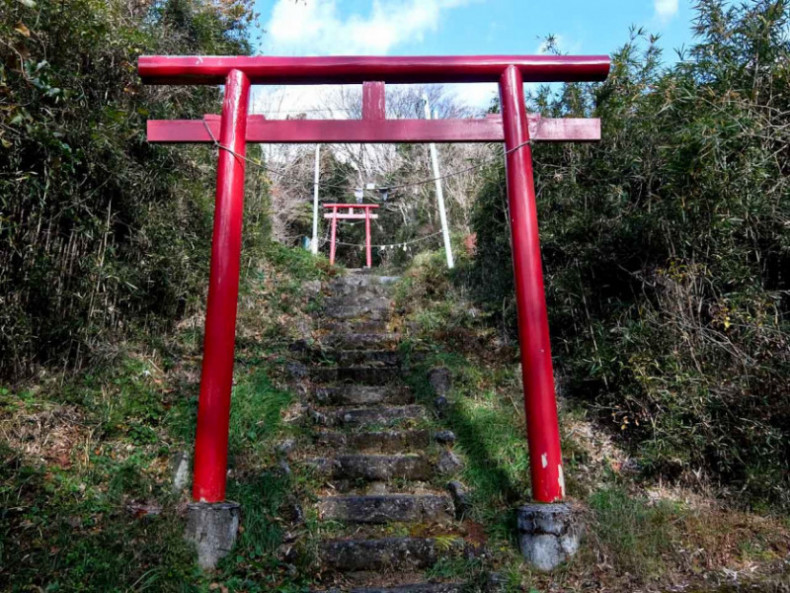
Just beyond is the white Kadowaki Cape Lighthouse, built in the 19th century to warn sailors of the treacherous rocks below. We climb to the top for a wonderful panorama of the coastline and the Pacific stretching out forever. The final stretch takes us across the 48m Kadowaki Suspension Bridge, swaying in the wind, 23m above the ocean. Faint hearted Japanese consider this something of a thrill and it’s a fitting end to our hikes through the heart of Shizuoka.
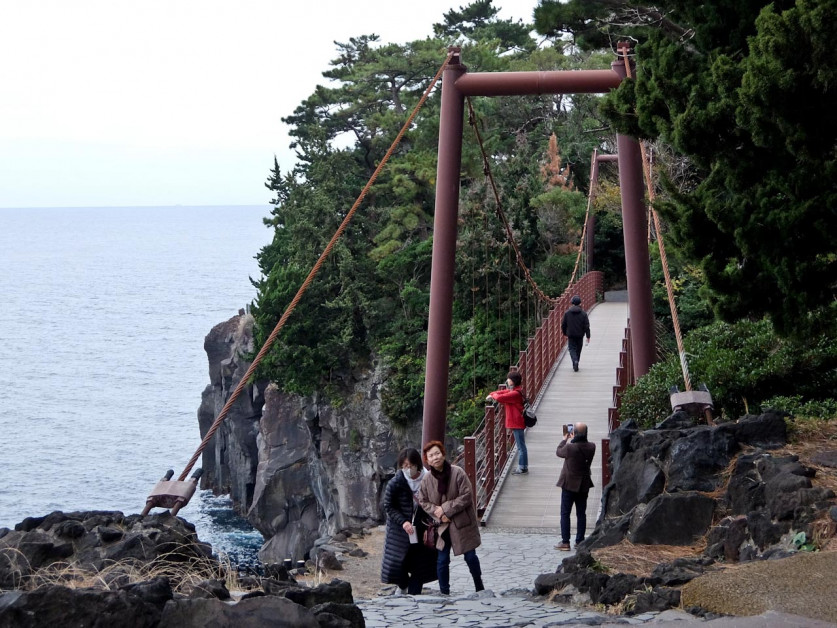
What’s attractive about this region is that, using the bullet train, it’s easily accessible from Tokyo, either for a day trip or a longer stay. The trails are well signed and it’s impossible to get lost, although I do recommend taking a guide in case of language difficulties. And the added bonus is those thrilling views of Mount Fuji. Particularly when the clouds part – it doesn’t get any better than this.
Tell Me More About this Insider Guide to hikes through the heart of Shizuoka
New Zealander Tony Everitt runs excellent guided walking tours including these hikes through the heart of Shizuoka.
Explore Shizuoka has information about the region and these hikes through the heart of Shizuoka
Japan Travel has information about the country.
JAL flies twice daily direct from London Heathrow to Tokyo Haneda.
The Shinkanzen or bullet train connects Tokyo and Odowara.
Fujisan Mishima Tokyu Hotel has good food and a rooftop bath with views of Mount Fuji.
Izu Imaihama Tokyu Hotel is right by the beach and serves exquisite Japanese dishes.



